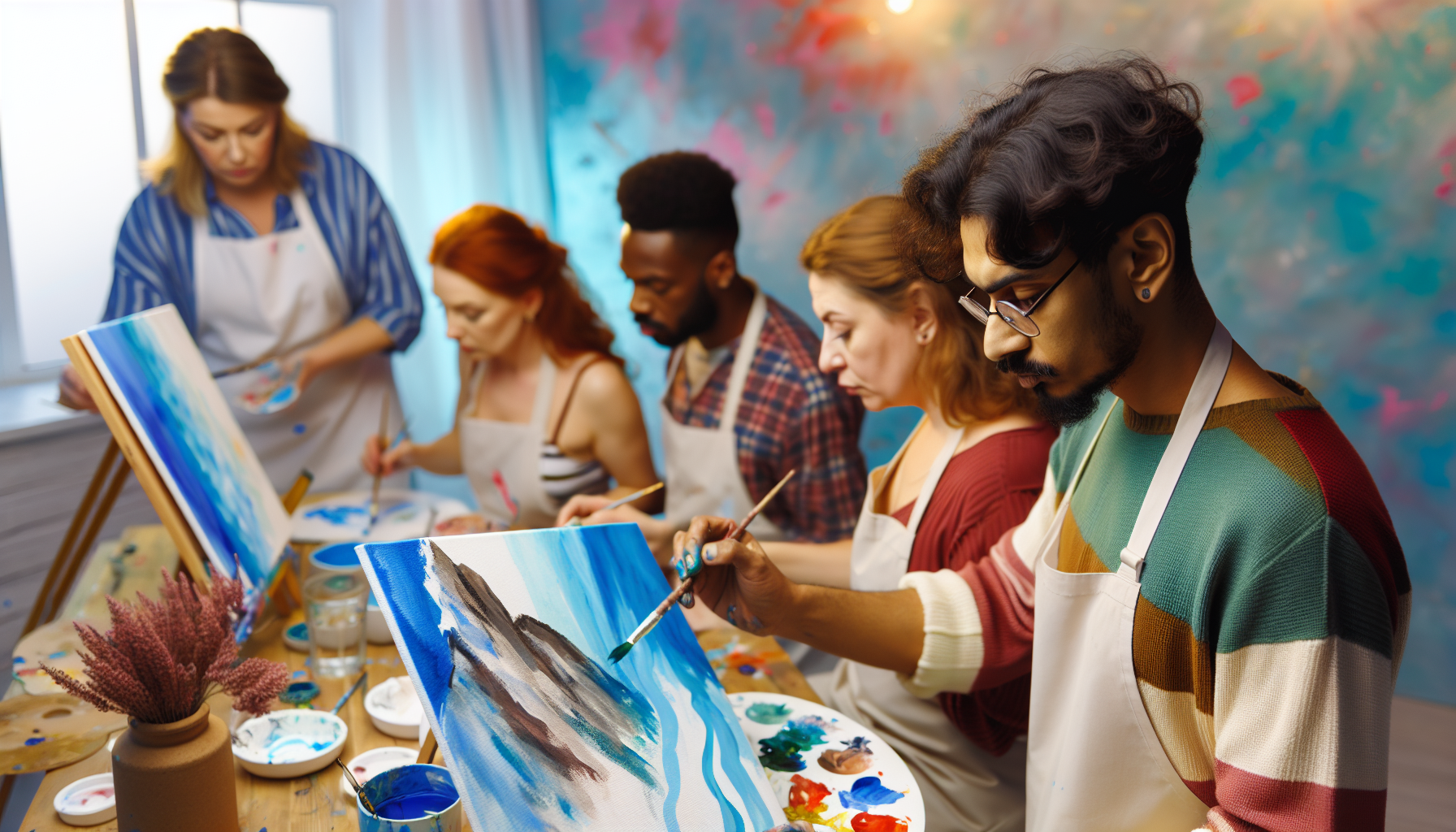Art Therapy - Healing through Creation
Art therapy, a form of psychotherapy that uses artistic creation as its primary mode of expression and communication, is a field that has grown significantly in recognition over the past several decades. Rooted in the belief that the process of making art is inherently healing and life-enhancing, art therapy aids individuals in expressing themselves beyond the limitations of language. The practice extends a hand to those seeking a deeper understanding of themselves and provides a refuge for healing and self-reflection. Whether utilized in a clinical setting or a more personal space, art therapy celebrates the power of creation as a path to mental and emotional well-being.

The Core of Art Therapy
Art therapy, at its essence, is about using the creative process to help individuals cope with stress, work through traumatic experiences, manage their behaviors and feelings, and improve self-esteem and awareness. Professionals in the field—art therapists—are skilled practitioners who combine their understanding of the visual arts with knowledge of therapeutic practices. These therapists guide their clients through creative exercises that are tailored to address specific psychological or emotional needs.
Benefits of Art Therapy
The advantages of engaging in art therapy are multifaceted, affecting emotional, cognitive, and social aspects of a person's life. Here’s how art as therapy can help in healing and personal growth:
Emotional Release and Healing
Creating art offers a safe outlet for expressing suppressed or complex emotions. Through painting, drawing, sculpting, or other mediums, individuals can confront feelings such as anger, sadness, or anxiety, directing these emotions onto a canvas or into a piece of clay, rather than letting them fester internally.
Enhancing Self-Understanding and Awareness
Artistic expression can serve as a mirror, revealing parts of oneself that may be hidden or ignored. By examining their own art, individuals often uncover insights about their inner state, patterns of behavior, or personal narratives that might otherwise remain obscured.
Cognitive Benefits
Art therapy stimulates the brain in diverse and unique ways. It encourages problem-solving, abstract thinking, and the exploration of different perspectives. These mental exercises can indeed be therapeutic, promoting mental agility and adaptability.
Social Engagement
Art therapy can be a communal activity, fostering connections with others. Group sessions or workshops offer a sense of community and support that can be particularly healing for individuals who feel isolated or disconnected.
Stress Reduction
The act of making art is meditative. The focus required can act as a form of mindfulness, helping individuals to live in the moment, which reduces stress and promotes mental tranquility.
Art Therapy in Clinical Contexts
Art therapy has proven useful in a variety of clinical settings, helping people of all ages to cope with an array of psychological disorders and emotional difficulties:
Mental Health Conditions
Art therapy has been used to support individuals with depression, anxiety, bipolar disorder, and schizophrenia, among other mental health conditions. It can offer a form of expression that is less intimidating than traditional talk therapy and can help in managing symptoms.
Trauma
Victims of trauma, including soldiers with PTSD or survivors of abuse, can find relief in art therapy. It can allow them to process and express their experiences without the pressure of finding the exact words to describe them.
Cognitive Impairments
For individuals with cognitive impairments due to conditions like dementia or brain injury, art therapy can improve cognitive function and communication abilities, as well as provide emotional comfort.
Children and Adolescents
Art therapy is particularly effective with younger populations, especially those who may not have the verbal skills to express their feelings fully. It can be used to help with behavioral issues, ADHD, and the emotional impacts of bullying or trauma.
Personal Well-Being and Art as a Self-Therapy
Not everyone who benefits from art does so in a clinical context. Many find that incorporating art into their daily lives serves as a form of self-care and personal therapy:
Self-Expression and Creativity
Individuals can use art to maintain a healthy connection with their inner selves. It encourages an ongoing dialogue with one's feelings and thoughts.
Mindfulness and Concentration
Engaging in art can be a practice in mindfulness; it requires concentration on the task at hand, and can thus be a powerful antidote to the stress of multitasking and constant digital distractions.
Skill and Achievement
Learning and improving artistic skills over time can lead to a feeling of personal achievement and confidence, which can spill over into other areas of life.
A Form of Self-Care
Art can be incorporated into routines as a self-care technique. Setting aside time to create can be a powerful way to ensure that one's personal wellbeing is nurtured.
Integrating Art Therapy into Your Life
You don't need to be an artist to benefit from art therapy. Here are a few tips for anyone looking to integrate the therapeutic practice of art into their life:
- Keep it Simple: Start with materials you’re comfortable with or have available—sketching with a pencil or painting with watercolors are great starting points.
- Make Time: Even 10 minutes a day can make a difference. Dedicate time regularly to your artistic practice to reap the greatest benefits.
- Focus on the Process: The therapeutic value lies much more in the act of creating than in the final result. Allow yourself to experiment and make mistakes.
- Reflect on Your Work: Spend some time looking at what you’ve created and consider what it might be saying about your current emotional state or thoughts.
- Share Your Art: If comfortable, sharing your work with others can be a therapeutic act in itself, opening up avenues for dialogue and connection.
Conclusion
Art therapy harnesses the transformative power of creation for therapeutic ends, providing an invaluable tool for healing and self-expression. Whether it's in a professional setting or through individual practice, making art is a pathway to inner harmony and wellbeing.
Remember that professional art therapists are trained to guide individuals through the therapeutic process, so if you’re seeking support for significant mental health challenges, consider reaching out to a specialist in your area. For others, simply beginning the journey of creation can be a step toward a healthier, more integrated self. In any form, the act of making art is a profound statement of what it means to be human—imperfect, expressive, and forever in pursuit of healing and understanding.
